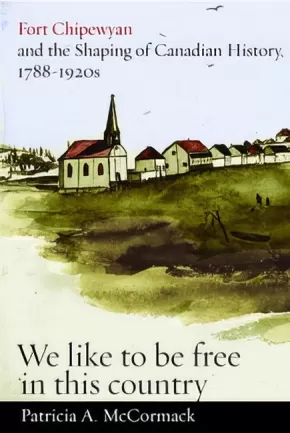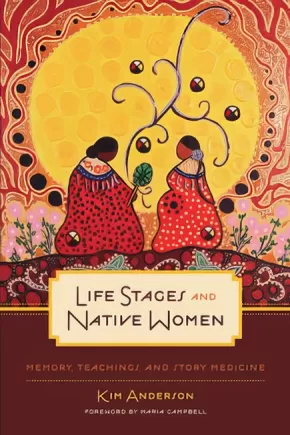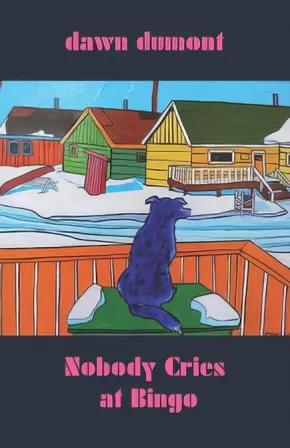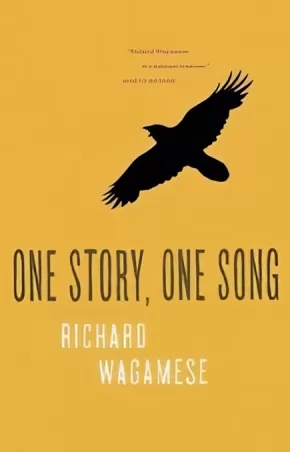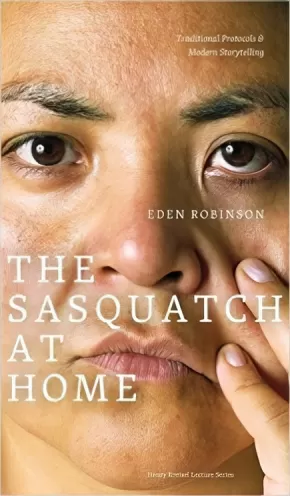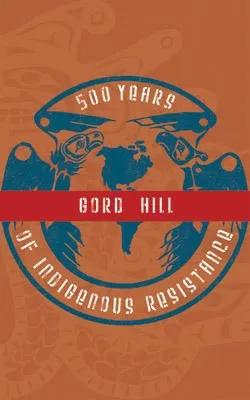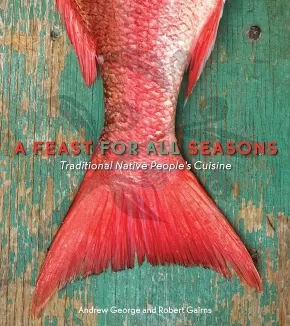
Non-Fiction
631
-
645
of
748 Results;
Sort By
Go To
of 50
Environmentalists from our First Nations
$10.95
Format:
Paperback
Text Content Territories:
Indigenous American; Indigenous Canadian;
ISBN / Barcode: 9781897187982
Synopsis:
Synopsis:
Like the other books in the First Nations Series for Young Readers, this book offers ten short and engaging biographies of First Nations/Native activists who advocate not only for the environment but for Native rights. Their stories are full of highs and lows, triumphs and setbacks. Environmental trailblazers, these men and women are role models for children everywhere.
The men and women profiled here are united by their work to protect the environment and to support indigenous rights. Their stories take us from the Arctic National Wildlife Refuge in Alaska to the Black Mesa in Arizona.
Melina Laboucan-Massimo uses her passion to stop oil extraction in Alberta’s tar sands.
Winona LaDuke is a voice for reclaiming Native lands, advocating renewable energy resources, and protecting Native cultures.
Clayton Thomas-Muller is a dynamic advocate for indigenous self-determination and campaigner against tar sands extraction.
Ben Powless brings his youthful energy and skills to addressing climate change issues.
Tom Goldtooth protects sacred sites and organizes global direct-action campaigns for the environment.
Grace Thorpe is a grandmother who dedicated her retirement years to keeping Native reservations from becoming nuclear waste dumps.
Sarah James is a voice from northern Alaska defending the Porcupine caribou herd and the Arctic National Wildlife Refuge.
Enei Begaye & Evon Peter are married activists who work as a team on environmental issues and sustainable strategies for Native people.
Klee Benally uses the media to empower Native communities in their fight for environmental justice.
Teague Allston works to ensure a tribal voice is heard in Washington DC.
Reviews
"These short biographies of environmentalists are sure to engage a whole classroom of readers. From the focus on a particular environmental crisis, to a description of each person's native heritage, to the writing style and level, the stories are accessible to readers young and old." — Canadian Teacher Magazine, March 2012
Educator & Series Information
This book is part of the First Nations Series for Young Readers. Each book is a collection of biographies of First Nations, Métis, and Inuit women and men who are leaders in their fields of work, in their art, and in their communities. For ages 9-14.
Additional Information
128 pages | 6.00" x 9.00"
Fort Chipewyan and the Shaping of Canadian History, 1788-1920s (1 in stock)
$39.95
Format:
Paperback
Text Content Territories:
Indigenous Canadian; First Nations; Dene; Denesuline (Chipewyan);
ISBN / Barcode: 9780774816694
Synopsis:
Synopsis:
The story of the expansion of European civilization into the wilderness continues to shape perceptions of how Aboriginal people became part of nations such as Canada. This groundbreaking study subverts this narrative of progress and modernity by examining Canadian nation building from the perspective of a northern community and its residents. Drawing on decades of research and fieldwork, Patricia McCormack argues that Fort Chipewyan - established in 1788 and situated in present-day Alberta - was never an isolated Aboriginal community but a plural society that stood at the crossroads of global, national, and indigenous cultures and economies. The steps that led Aboriginal people to sign Treaty No. 8 and accept scrip in 1899 and their struggle to maintain autonomy in the decades that followed reveal that Aboriginal peoples and others can - and have - become modern without relinquishing cherished beliefs and practices. This meticulously researched study of the most famous and best studied of the Treaty No. 8 communities not only provides a window into the history of Canada and Alberta - it challenges the nature of history writing in Canada itself. Anyone interested in the history of First Nations, northern communities, or the way historians and local communities approach and understand the past should read this book.
Isuma: The Art and Imagination of Ruben Komangapik
$29.95
Artists:
Format:
Paperback
ISBN / Barcode: 9781926569185
Synopsis:
Synopsis:
Ruben Anton Komangapik is one of the Arctic's most gifted sculptors.
His work has been exhibited across Canada with pieces on permanent loan to the Museum of Nature and Culture in Montreal. In Isuma, Ruben's vibrant, provocative sculpture, and his artistic process, are brought to life by photographer Estelle Marcoux Komangapik's arresting images.
Part autobiography, part art object, this book will introduce Canadians to one of the Arctic's most talented young artists.
Life Stages and Native Women: Memory, Teachings, and Story Medicine
$27.95
Format:
Paperback
Text Content Territories:
Indigenous Canadian; Métis; First Nations; Cree (Nehiyawak); Anishinaabeg;
ISBN / Barcode: 9780887557262
Synopsis:
Synopsis:
A rare and inspiring guide to the health and well-being of Aboriginal women and their communities.
The process of "digging up medicines" - of rediscovering the stories of the past - serves as a powerful healing force in the decolonization and recovery of Aboriginal communities. In Life Stages and Native Women, Kim Anderson shares the teachings of fourteen elders from the Canadian prairies and Ontario to illustrate how different life stages were experienced by Métis, Cree, and Anishinaabe girls and women during the mid-twentieth century. These elders relate stories about their own lives, the experiences of girls and women of their childhood communities, and customs related to pregnancy, birth, post-natal care, infant and child care, puberty rites, gender and age-specific work roles, the distinct roles of post-menopausal women, and women's roles in managing death. Through these teachings, we learn how evolving responsibilities from infancy to adulthood shaped women's identities and place within Indigenous society, and were integral to the health and well-being of their communities. By understanding how healthy communities were created in the past, Anderson explains how this traditional knowledge can be applied toward rebuilding healthy Indigenous communities today.
Additional Information
|
Nobody Cries at Bingo
$15.95
Format:
Paperback
Text Content Territories:
Indigenous Canadian; First Nations; Cree (Nehiyawak); Anishinaabeg; Ojibway; Saulteaux;
ISBN / Barcode: 9781897235843
Synopsis:
Synopsis:
In Nobody Cries At Bingo, the narrator, Dawn, invites the reader to witness first hand Dumont family life on the Okanese First Nation. Beyond the sterotypes and clichés of Rez dogs, drinking, and bingos, the story of a girl who loved to read begins to unfold. It is her hopes, dreams, and indomitable humour that lay bear the beauty and love within her family. It is her unerring eye that reveals the great bond of family expressed in the actions and affections of her sisters, aunties, uncles, brothers, cousins, nieces, nephews, and ultimately her ancestors.
It’s all here — life on the Rez in rich technicolour — as Dawn emerges from home life, through school life, and into the promise of a great future. Nobody Cries At Bingo embraces cultural differences and does it with the great traditional medicine of laughter.
Educator Information
Young adult fiction.
Recommended English First Peoples resource for grades 11-12 in the unit What Creates Family.
Additional Information
136 pages | 5.48" x 8.48"
One Story, One Song
$19.95
Format:
Paperback
Text Content Territories:
Indigenous Canadian; First Nations; Anishinaabeg; Ojibway; Wabaseemoong First Nation;
ISBN / Barcode: 9781771620802
Synopsis:
Synopsis:
A collection of warm, wise and inspiring stories from the author of the bestselling One Native Life.
Since its publication in 2008, readers and reviewers have embraced Richard Wagamese's One Native Life. In quiet tones and luminous language,wrote the Winnipeg Free Press, Wagamese shares his hurts and joys, inviting readers to find the ways in which they are joined to him and to consider how they might be joined to others.
In this book, Richard Wagamese again invites readers to accompany him on his travels. This time, his focus is on stories: how they shape us, how they empower us, how they change our lives. Ancient and contemporary, cultural and spiritual, funny and sad, the tales are grouped according to the four Ojibway storytelling principles: balance, harmony, knowledge and intuition.
Whether the topic is learning from his grade five teacher about Martin Luther King, gleaning understanding from a wolf track, lighting a fire for the first time without matches or finding the universe in an eagle feather, these stories exhibit the warmth, wisdom and generosity that made One Native Life so popular. As always, in these pages, the land serves as Wagamese' guide. And as always, he finds that true home means not only community but conversation good, straight-hearted talk about important things. We all need to tell our stories, he says. Every voice matters.
Reviews
"One Story, One Song is a collection of short stories that show how stories shape & empower us, and change our lives. The stories are grouped according to the 4 essential principles of the Ojibway traditional teachings: humility, trust, introspection, and wisdom." - The Dalai Lama Center
Additional Information
216 pages | 5.52" x 8.50" | Paperback
Relatives With Roots
$17.50
Artists:
Format:
Paperback
Text Content Territories:
Indigenous Canadian; Métis;
ISBN / Barcode: 9781926795003
Synopsis:
Synopsis:
Relatives With Roots: A Story About Métis Women’s Connection to the Land is a heartfelt story about a Métis grandmother who takes her granddaughter out into the bush to teach her how to pick traditional medicines. As the granddaughter learns the traditional beliefs and stories about how the Métis people use the plants for food and medicine, she feels happy to be a Métis child with access to such wonderful cultural knowledge. This charming and vibrant book introduces young readers to key concepts in the traditional Métis worldview while focusing on the special relationship between a young Métis girl and her grandmother. Relatives With Roots is the second in a series of children’s books relating to traditional Métis values by Leah Marie Dorion. The first book, The Giving Tree: A Retelling of a Traditional Métis Story, was nominated in 2010 for a Willow Award in the Shining Willow category.
Additional Information
61 Pages | 28 cm x 21.5 cm
Seeing Red: A History of Natives in Canadian Newspapers
$27.95
Format:
Paperback
Text Content Territories:
Indigenous Canadian;
ISBN / Barcode: 9780887557279
Synopsis:
Synopsis:
The first book to examine the role of Canada’s newspapers in perpetuating the myth of Native inferiority. Seeing Red is a groundbreaking study of how Canadian English-language newspapers have portrayed Aboriginal peoples from 1869 to the present day. It assesses a wide range of publications on topics that include the sale of Rupert’s Land, the signing of Treaty 3, the North-West Rebellion and Louis Riel, the death of Pauline Johnson, the outing of Grey Owl, the discussions surrounding Bill C-31, the “Bended Elbow” standoff at Kenora, Ontario, and the Oka Crisis. The authors uncover overwhelming evidence that the colonial imaginary not only thrives, but dominates depictions of Aboriginal peoples in mainstream newspapers. The colonial constructs ingrained in the news media perpetuate an imagined Native inferiority that contributes significantly to the marginalization of Indigenous people in Canada. That such imagery persists to this day suggests strongly that our country lives in denial, failing to live up to its cultural mosaic boosterism.
Additional Information
336 pages | 6.00" x 9.00"
Shannen and the Dream for a School
$16.95
Format:
Paperback
Text Content Territories:
Indigenous Canadian; First Nations; Cree (Nehiyawak); Swampy Cree ; Attawapiskat;
ISBN / Barcode: 9781926920306
Synopsis:
Synopsis:
This is the true story of Shannen Koostachin and the people of Attawapiskat, a Cree community in Northern Ontario, who have been fighting for a new school since 1979, when a fuel spill contaminated their original school building.
It is 2008, and thirteen-year-old Shannen and the other students at J.R. Nakogee Elementary are tired of attending class in portables that smell and don’t keep out the freezing cold winter air. They make a YouTube video describing the poor conditions, and their plea for a decent school gains them attention and support from community leaders and children across the country. Inspired, the students decide to turn their grade-eight class trip into a visit to Ottawa, to speak to the Canadian government. Once there, Shannen speaks passionately to the politicians about the need to give Native children the opportunity to succeed. The following summer, Shannen is nominated for the International Children’s Peace Prize. Her passion and that of the other students makes politicians stand up and take notice, and becomes a rallying point for the community and for the country.
Shannen will never see her dream fulfilled. Tragically, she was killed in a car crash in 2010. Her family, friends, and supporters are continuing to fight and to honor her memory as they work for equality for children in communities everywhere.
Awards
- In 2012-2013 Shannen and the Dream for a School was the award recipient for First Nation Communities Read.
Educator & Series Information
This book is part of the Kids' Power Series.
Recommended for ages 9 to 13.
Authenticity Note: This book has received the Authentic Indigenous Text label as it is written by Janet Wilson with the participation and support of members of the Attawapiskat community.
The Sasquatch at Home
$12.99
Format:
Paperback
Text Content Territories:
Indigenous Canadian; First Nations; Haisla (Kitamaat); Heiltsuk (Bella Bella);
Grade Levels: 12; University/College;
ISBN / Barcode: 9780888645593
Synopsis:
Synopsis:
In March 2010 the Canadian Literature Centre hosted award-winning novelist and storyteller Eden Robinson at the 4th annual Henry Kreisel Lecture. Robinson shared an intimate look into the intricacies of family, culture, and place through her talk, "The Sasquatch at Home." Robinson's disarming honesty and wry irony shine through her depictions of her and her mother's trip to Graceland, the potlatch where she and her sister received their Indian names, how her parents first met in Bella Bella (Waglisla, British Columbia) and a wilderness outing where she and her father try to get a look at b'gwus, the Sasquatch. Readers of memoir, Canadian literature, Aboriginal history and culture, and fans of Robinson's delightful, poignant, sometimes quirky tales will love The Sasquatch at Home.
Reviews
"[Eden Robinson's] lecture reprises the Sasquatch theme from her novel, Monkey Beach. It is less a lecture than an extended poem – a love song to a place and people, a celebration of survival of places, names, and humans.... The work is filled with alternate narratives. Just when we are eagerly following a line of story or thought, out come Trickster-ish turns and teases.... Robinson seductively draws outsiders in, then sharply clarifies the limits of the welcome.... Eden Robinson brings her own literary ethics to the discussion [of the limits of cross-cultural sharing]. Her consciousness and conscientiousness permeate her fiction as well as the Sasquatch lecture. It is fitting that Paula Simons calls her 'one of Canada’s most provocative and talented writers' and also 'a moral and cultural force'." -Valerie Alia, Cantext, February 2012
Additional Information
64 pages | 14.00" x 23.00"
500 Years of Indigenous Resistance (PB)
$10.95
Format:
Paperback
Text Content Territories:
Indigenous American; Indigenous Canadian; Indigenous Central American; Indigenous South American;
Reading Level: N/A
ISBN / Barcode: 9781552663974
Synopsis:
Synopsis:
The history of the colonization of the Americas by Europeans is often portrayed as a mutually beneficial process, in which ”civilization” was brought to the Natives, who in return shared their land and cultures. A more critical history might present it as a genocide in which Indigenous peoples were helpless victims, overwhelmed by European military power. In reality, neither of these views is correct. This book is more than a history of European colonization of the Americas. In this slim volume, Gord Hill chronicles the resistance by Indigenous peoples, which limited and shaped the forms and extent of colonialism. This history encompasses North and South America, the development of nation-states and the resurgence of Indigenous resistance in the post-WW2 era.
Additional Information
72 pages | 8.50" x 5.50"
A Feast for All Seasons: Traditional Native Peoples' Cuisine
$24.95
Format:
Paperback
Text Content Territories:
Indigenous Canadian;
ISBN / Barcode: 9781551523682
Synopsis:
Synopsis:
Traditional North American Native peoples' cuisine has existed for centuries, but its central tenet of respecting nature and its bounty have never been as timely as they are now. Andrew George, of the Wet'suwet'en Nation in Canada, is a well-respected aboriginal chef and instructor who has spent the last twenty-five years promoting the traditions of First Nations food. In A Feast for All Seasons, written with Robert Gairns, he has compiled aboriginal recipes that feature ingredients from the land, sea, and sky, elements of an enduring cuisine that illustrate respect for the environment and its creatures, and acknowledgment of the spiritual power that food can have in our lives.
The 120 recipes include delectable, make-at home dishes such as Salmon and Fiddlehead Stirfry, Stuffed Wild Duck, Barbecued Oysters, Pan-fried Rabbit with Wild Cranberry Glaze, Clam Fritters, and Wild Blueberry Cookies. The book also features recipes with exotic ingredients that provide a fascinating glimpse into the history of Native cuisine: Moose Chili, Boiled Porcupine, Smoked Beaver Meat, and Braised Bear.
This unique cookbook pays homage to an enduring food culture--grounded in tradition and the power of nature--that transcends the test of time.
Reviews
"A lovely cookbook ... A great gift for anyone interested in Canadian food history, First Nations or locavore diets."— Calgary Herald
"I loved that some of the recipes were simple, like the three-ingredient Baked Sweet Potato with Roasted Hazelnuts, a great accompaniment to wild game like the simple Roast Venison ... A Feast for All Seasons gives a glimpse into the purpose of the feast that brings people together." — St'at'imc Runner
Additional Information
152 pages | 8.00" x 9.00" | Paperback
A Field Guide to Coastal Flowers of the Pacific Northwest
$8.95
Format:
Pamphlet
Reading Level: N/A
ISBN / Barcode: 9781550174731
Synopsis:
Synopsis:
With gorgeous full-colour photos arranged in an easy-to-use colour coded chart for quick identification, the pocket-sized format is perfect for taking along on walks and hikes through both the Pacific Northwest countryside as well as the urban wilds of West Coast cities. Supplying English and Latin names, the distribution range of each species and average plant height and flower size, Phillipa Hudson shares her knowledge of coast flora gained through over 30 years as an active amateur botanist.
Bison Delights: Middle Eastern Cuisine, Western Style (1 in Stock) - ON SALE!
$23.00 $29.95
Format:
Paperback
Text Content Territories:
Indigenous;
ISBN / Barcode: 9780889772151
Synopsis:
Synopsis:
Habeeb Salloum spent his childhood on the Saskatchewan prairies, the son of Syrian homesteaders who thrived during the depression and drought of the 1930s by growing the dryland crops of their homeland. In this cookbook, Salloum returns not only to his childhood home, but to the historical sustainer of life on the prairies—the bison.
For thousand of years, the indigenous peoples of the prairies relied on the bison for clothing, shelter, tools, and food. The arrival of Europeans to the West nearly wiped out the bison population, but over the past several decades, through conservation and re-population efforts, bison numbers have increased. Bison ranches can now be found across North America.
Inspired by the increasing availability of bison meat, Mr. Salloum, an expert in Arab cuisine, has adapted over 100 recipes from the Middle East for use with this historical Prairie staple now being re-discovered across North America. Amateur and professional chefs alike will welcome the opportunity to add these straightforward, thorough, and easy-to-follow recipes to their culinary repertoires.
Content Note: While there may be information about Indigenous peoples in this book, its focus is on recipes from the Middle East.
Great Musicians from our First Nations
$10.95
Format:
Paperback
Text Content Territories:
Indigenous American; Indigenous Canadian;
ISBN / Barcode: 9781897187760
Synopsis:
Synopsis:
Music is their passion. Follow the journeys of ten talented musicians from the Native community as they make their way to the top. All of them, whether their music is traditional drumming or mainstream rock, bring their own cultural traditions to their music.
Rising stars Shane Yellowbird and Crystal Shawanda are steeped in country music. The Blackfire band combines punk rock with Dine’ music, while Four Rivers Drum has been drumming at powwows for more than fourteen years. Leela Gilday is an award-winning folk artist and Michael Bucher's music protects sacred sites. Contrast classical guitarist Gabriel Ayala with rock guitarist Mato Nanji and learn about the talents of jazz vocalist Jamie Coon and Native American flutist Mary Youngblood.
Educator & Series Information
This book is part of the First Nations Series for Young Readers. Each book is a collection of biographies of First Nations, Métis, and Inuit women and men who are leaders in their fields of work, in their art, and in their communities.
For ages 9-14.
Additional Information
128 pages | 6.00" x 9.00"
Sort By
Go To
of 50



